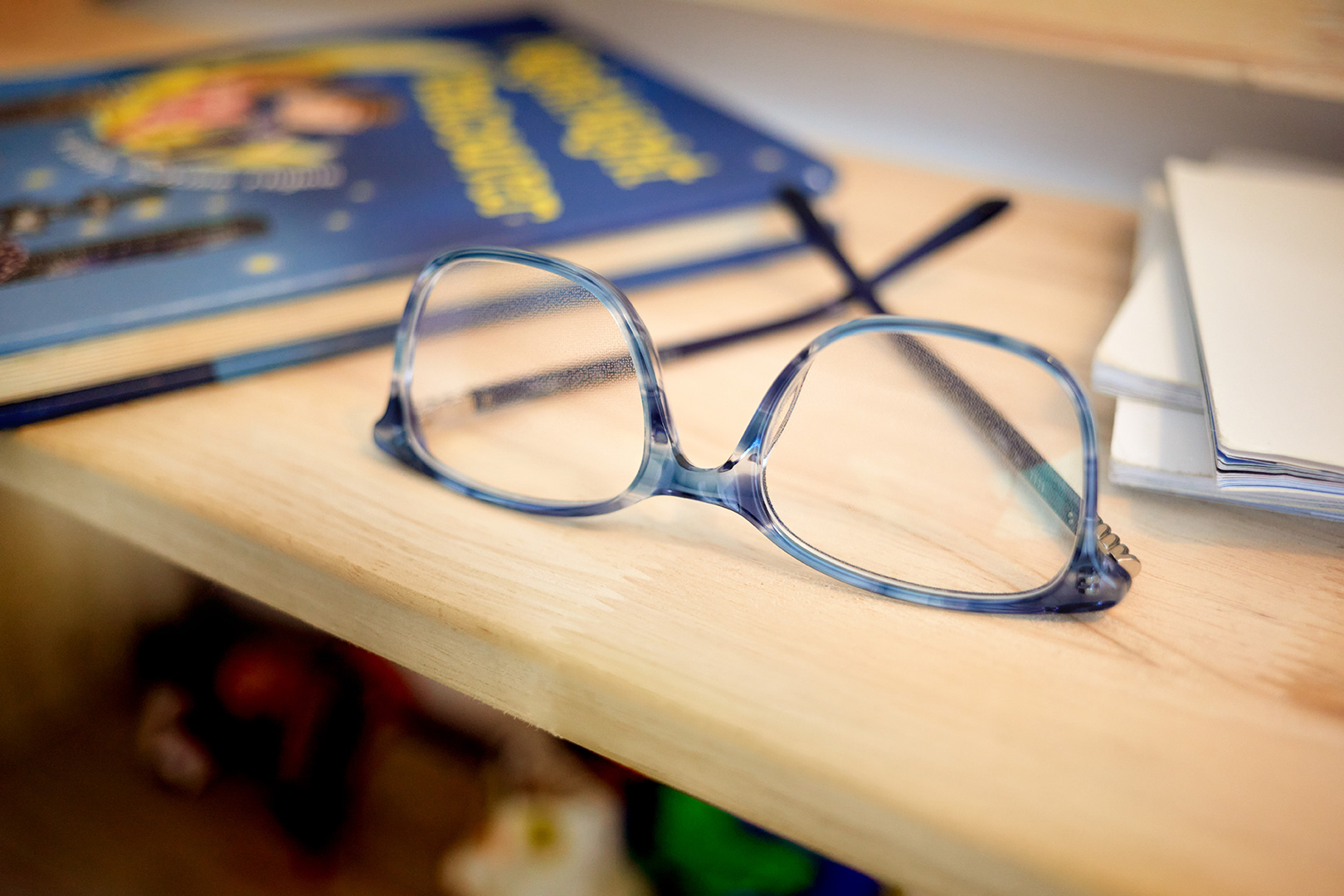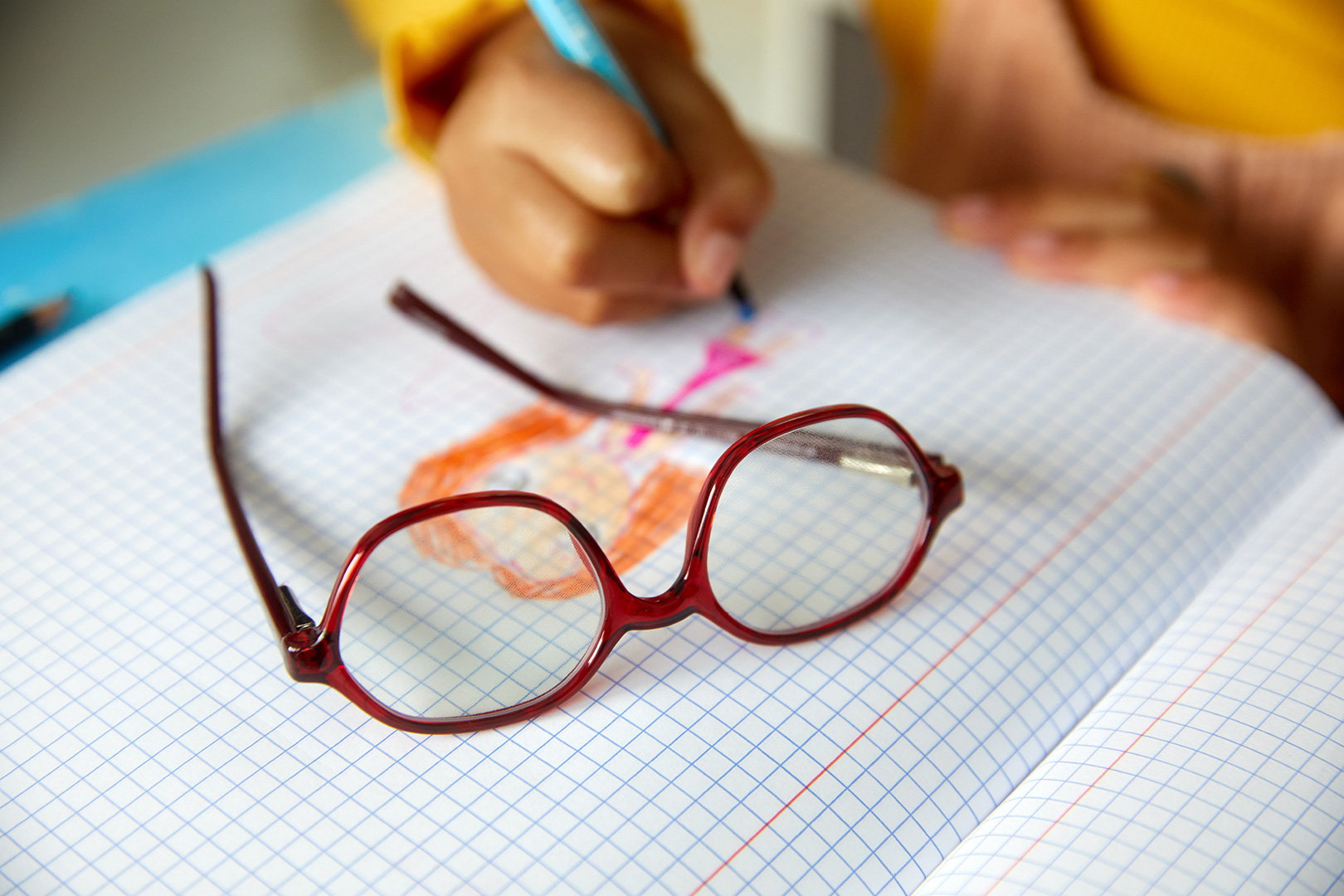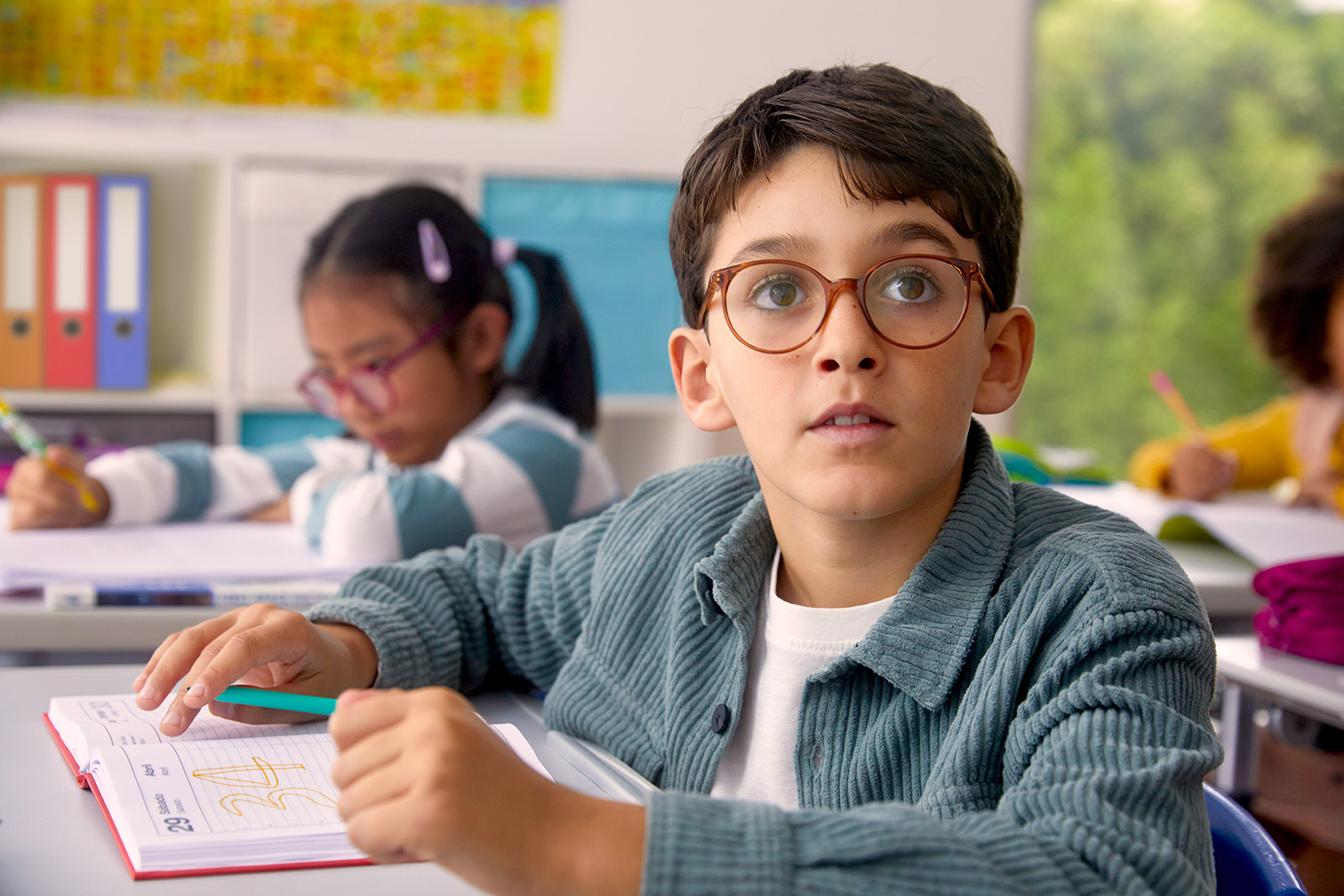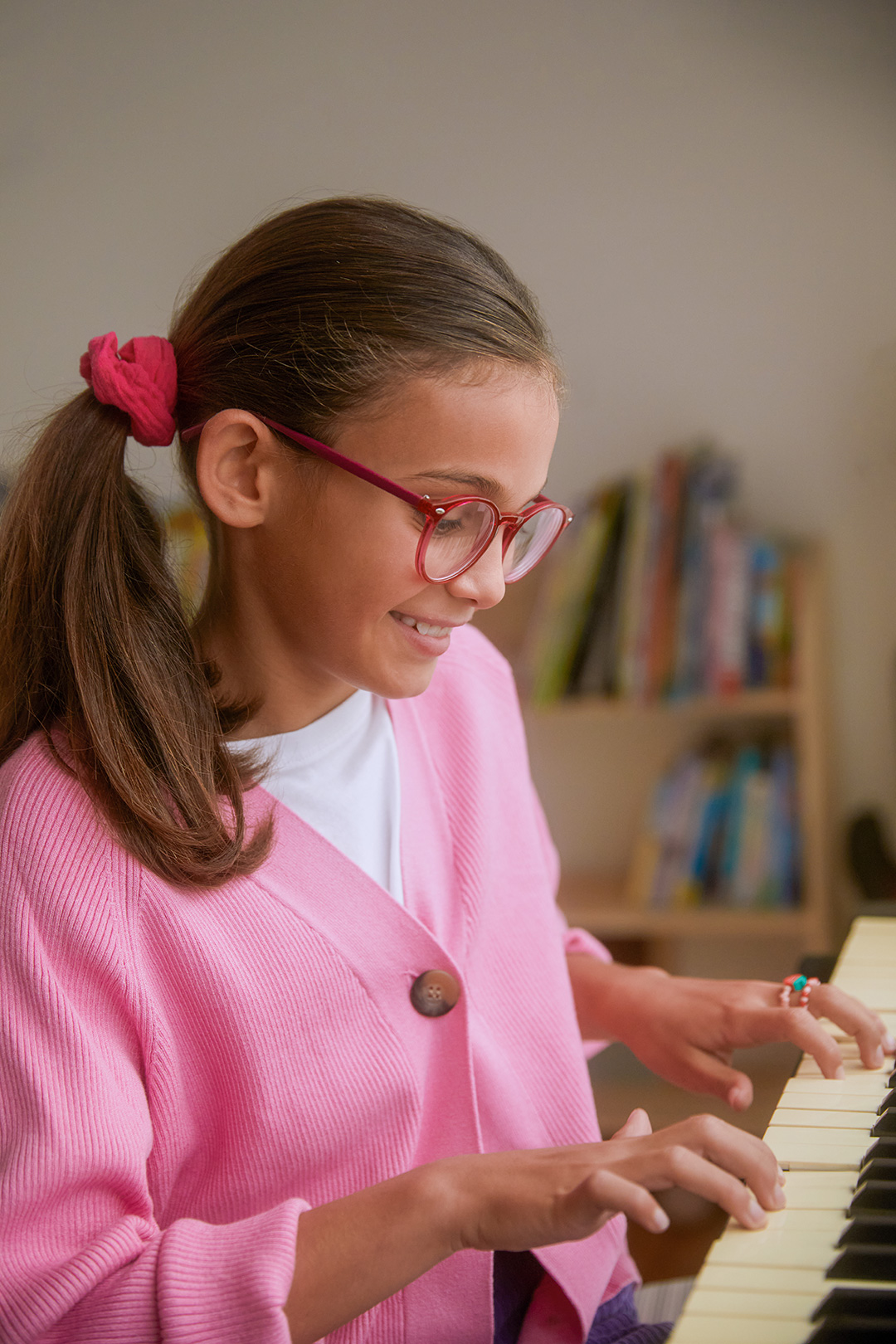
How to recognize symptoms of myopia?

Myopia is on the rise in populations all over the world. So much so that new studies have predicted that by 2050, it will affect half of the world’s population.
While it was for a long time believed to be the result of genetics (if you have myopia, your kid would be more likely to develop it as well), new studies¹ have brought to light the importance of lifestyle and specifically insufficient time spent outdoors as a risk factor for myopia progression in children.
Myopia is progressive, meaning it can worsen every year, so you should monitor your child’s vision properly with regular check–ups with your eye–care professional, but also by being on the lookout for symptoms at home.
Watching out for symptoms of myopia in your children is the first step to detecting myopia at home.
How can you recognize the symptoms of myopia in children?
First of all, what is myopia?
The first step to recognizing its symptoms is to understand what myopia is.
Myopia, a definition:
Myopia, or nearsightedness, is when you can’t clearly distinguish objects or writing in the distance.
As a result, far–away things appear blurry, while close–by objects can be clear.
This is caused by an elongated eyeball shape, which prevents the light entering the eye from focusing on the retina correctly, blurring far–away sight.
It is a progressive issue, so it is essential to watch out for symptoms during childhood, when it has been shown that the eye continues to grow, potentially progressing myopia.
What are the causes of myopia:
Firstly, myopia can be a hereditary disease, meaning that your children could be more at risk of developing it if you have myopia. Recent researchers have been trying to pinpoint the exact genes responsible for myopia. However, we still have a long way to go before a genetic test becomes available as part of an eye examination to determine which children are at risk of becoming myopic.
One factor we can influence, which is a very important factor in the progression of myopia, is lifestyle. Specifically, contrast theory has proposed a link between time spent in high–contrast environments and myopia development.
Therefore, if your child spends a lot of time indoors, staring at high–contrast screens or books, rather than outdoors playing in low–contrast environments, they could be more at risk of developing myopia. Indeed, researchers have suggested that high–contrast environments overstimulate eye growth, causing nearsightedness.
Another factor that encourages good vision, in general, is having a healthy lifestyle.
What are the symptoms of myopia?
Advice from the John Hopkins Medical Institute has shown that there are several symptoms you
should watch out for in your kids:
They get headaches
If your child complains of frequent headaches, with pain focused around the eyes, that could be an eye–sight issue symptom. Be particularly alert if these headaches come after watching TV, a computer screen, or trying to read a classroom board.
They can’t see the classroom board or TV screen clearly
If your child tells you that they can’t see objects clearly from a certain distance or doesn’t distinguish their details, then this is a symptom of myopia.
In fact, they have a more challenging time studying or concentrating
Poor vision can lead to shorter attention spans in school, as your children can’t concentrate on a classroom board properly, have difficulties reading, and therefore struggle to pay attention for an extended period of time. So be on the lookout for signs of difficulties concentrating or studying, which could indicate an eye issue.
They squint:
Physically, a child with myopia could try to squint to see objects at a distance more clearly.
They tilt their head to the side:
Same as squinting, moving their heads around to try to see better is a sure sign of troubled vision.
They rub their eyes often
If you notice your child rubbing their eyes often or complaining about aches behind their eyeballs, this could be eye strain or fatigue symptoms.
Now that you’ve identified symptoms of myopia, what’s next?
If you believe your child has myopia symptoms, there are several things to do.
Schedule an eye exam with an eye care professional
During their childhood, you should schedule an eye exam every year to ensure that your child’s vision isn’t developing any specific issues and is progressing healthily. If, however, you notice some of the symptoms listed above before their annual exam, make sure to go in early and check it with your eye–care professional. If they have developed myopia or any eye–sight issue, your eye–care professional will then be able to advise you on the best course of action, such as Diffusion Optics Technology™ (DOT) spectacle lenses.
Discover our Diffusion Optics Technology™ (DOT) lenses
Diffusion Optics Technology™ (DOT) lenses are corrective lenses aimed at managing contrast to manage myopia. Indeed, as high contrast has been linked to myopia, Diffusion Optics Technology™ (DOT) lenses scatter the light entering the eye, softening contrast. This has been clinically shown² to help reduce myopia progression in children aged 6–10.
Conclusion
Myopia can be a progressive issue, especially during childhood when the body is still growing. So be on the lookout for signs of eyesight issues in your kids by knowing the symptoms to watch out for at home and scheduling regular exams with their eye–care professionals. If your children do develop myopia, inquire about Diffusion Optics Technology™ (DOT) lenses to help manage its progression throughout the years!
- Morgan et al. IMI Risk Factors for Myopia. Invest Ophthalmol Vis Sci. 2021;62(5):3
- Joe Rappon, Carol Chung, Graeme Young, Christopher Hunt, Jay Neitz, Maureen Neitz, Thomas Chalberg: Control of myopia using diffusion optics spectacle lenses: 12-month results of a randomised controlled, efficacy and safety study (CYPRESS)
Other articles
All articlesPlease note that our products are not available for sale or distribution in every country in the world.
Our products are not available for sale in the U.S.

